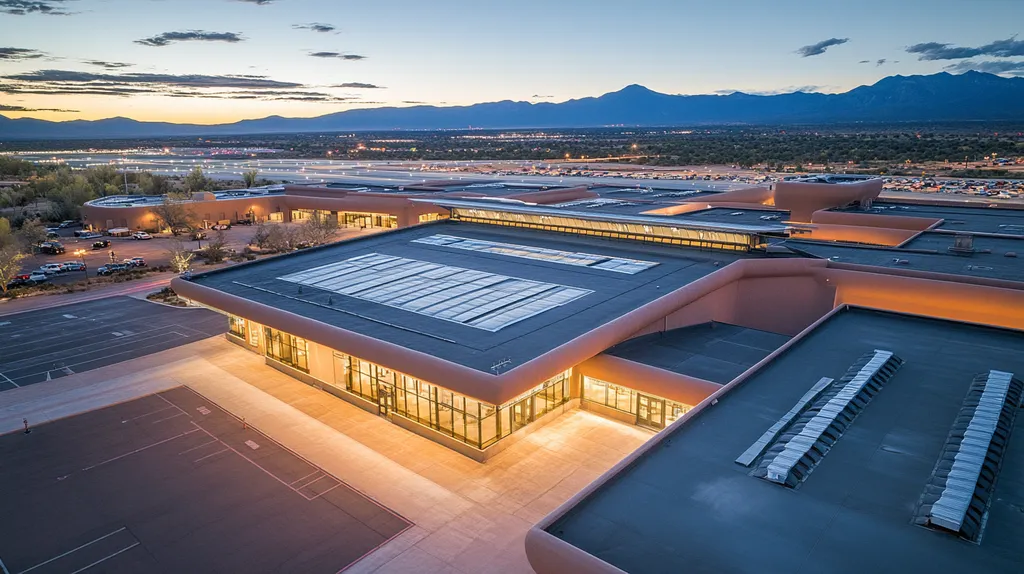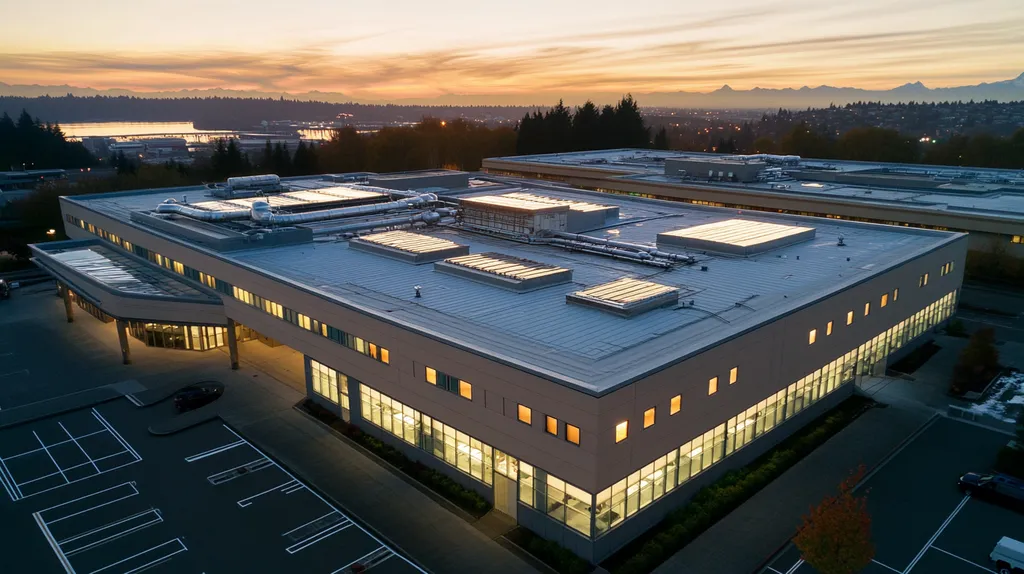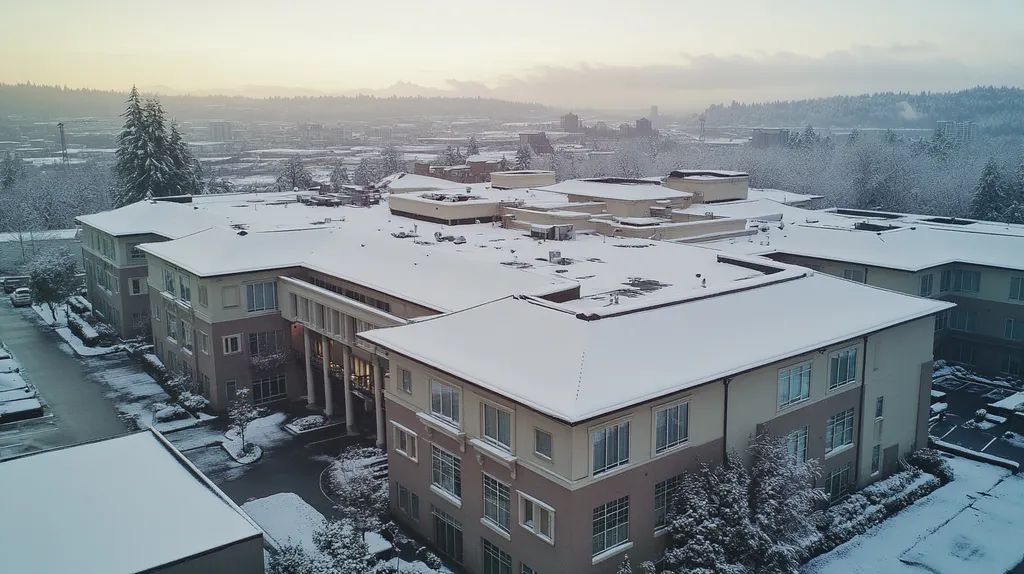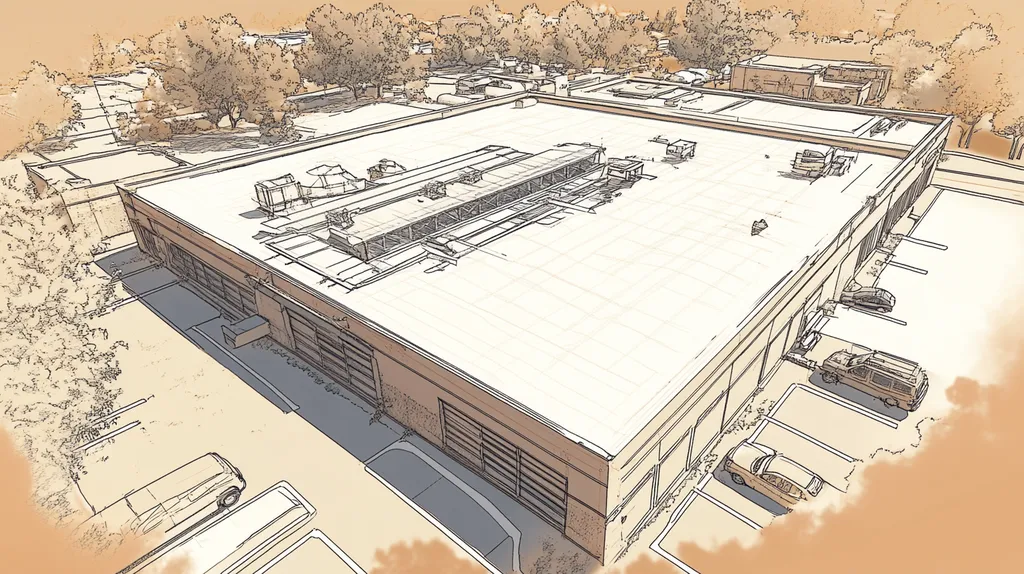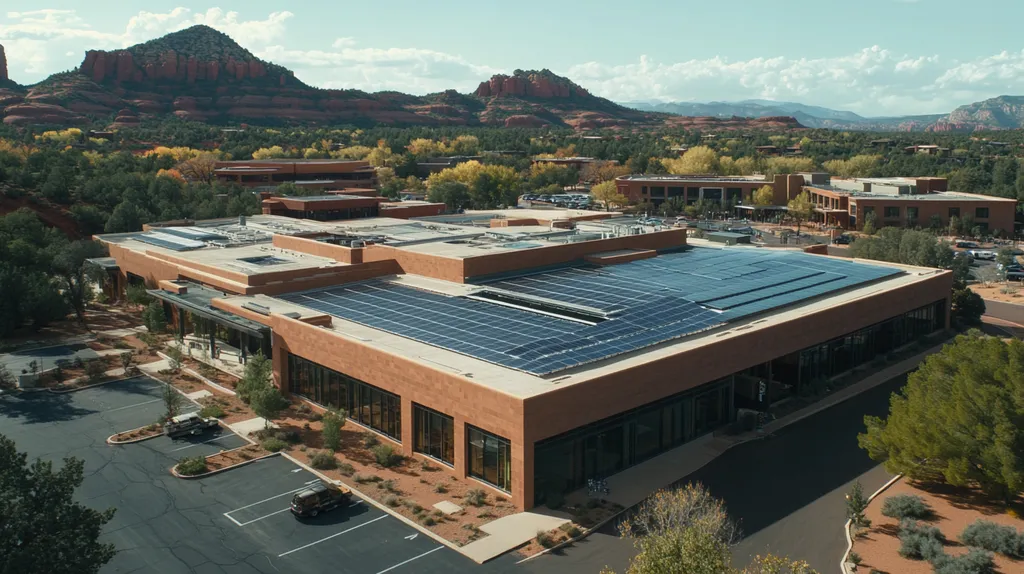Every year, commercial property owners lose millions due to roofing failures, with 40% directly linked to inadequate contractor certifications and compliance issues. These preventable losses often stem from overlooking essential verification steps during contractor selection.
For facility managers, ensuring proper certifications represents the critical difference between a secure, long-lasting roof installation and potentially catastrophic failures that can disrupt operations and damage assets.
This comprehensive guide examines the vital components of contractor certification compliance, from performance benchmarks to risk management strategies, providing facility managers with actionable steps to protect their roofing investments.
SECTION 1: PERFORMANCE FACTORS
For facility managers, grasping the performance factors of roofing systems is not just important—it’s essential. A striking study reveals that 30% of commercial roofs fail within the first 10 years because of improper installations and insufficient certifications. This can lead to significant costs and safety hazards for property owners if roofing contractors aren’t adequately qualified. Here, we will explore three critical aspects: roofing system reliability, installation quality standards, and weather resistance evaluation. Each plays a vital role in determining the durability and efficiency of commercial roofing systems.
Roofing System Reliability
The reliability of a roofing system is influenced by several key factors, such as material quality and installation practices. Certified contractors possess the expertise to choose the right materials tailored to various building types and local climates. Opting for inferior materials can result in early failures, prompting costly repairs and unnecessary headaches for property owners.
A roofing system’s effectiveness is often measured by its expected lifespan and historical performance data. For example, a properly installed TPO roof typically has an average lifespan of around 20 years. Knowing these benchmarks empowers facility managers with the insight needed to make informed decisions regarding upkeep and repairs.
Additionally, regular inspections conducted by certified professionals can significantly boost reliability. These evaluations identify potential vulnerabilities before they develop into major issues. By implementing proactive monitoring, facility managers can extend the life of their roofing systems and protect the overall integrity of their buildings.
Key Action Items
Installation Quality Standards
Installation quality stands as a cornerstone for the success of any commercial roofing project. Adhering to rigorous installation standards is crucial for achieving top-notch performance and ensuring warranty protection. Certified contractors are trained in these essential standards, significantly minimizing the likelihood of mistakes during the installation process.
The National Roofing Contractors Association (NRCA) provides guidelines aimed at ensuring that installations meet industry benchmarks. Ignoring these standards can compromise warranties, leading to leaks, insulation failures, and energy inefficiencies.
Moreover, adequate training for roofing crews is imperative. It is essential that workers are well-versed in best practices and innovative installation techniques to guarantee durability. Emphasizing ongoing education for roofing personnel can substantially enhance overall installation quality.
Key Action Items
Weather Resistance Evaluation
Evaluating a roof’s weather resistance is essential for its longevity and effectiveness. Different geographic regions present unique weather challenges—ranging from heavy snowfall to intense heat—necessitating a keen understanding of how roofing systems combat these elements.
For instance, roofs in high rainfall zones should include adequate drainage systems to avert water pooling. Certified contractors are equipped to analyze weather patterns and choose roofing materials designed to endure specific environmental challenges.
Furthermore, adherence to local building codes relating to weather resistance is of utmost importance. These codes often specify particular materials and practices that improve a roof’s resilience against the elements. Neglecting compliance can lead to severe consequences, including roof collapses or extensive water damage.
Key Action Items
SECTION 2: FINANCIAL CONSIDERATIONS
The financial implications of contractor certifications in commercial roofing cannot be overstated. Selecting the wrong roofing contractors can result in higher costs, project delays, and threats to building integrity. Studies indicate that facilities investing in certified professionals enjoy 20% fewer maintenance issues over ten years. Therefore, understanding the financial aspects of contractor certifications is crucial for facility managers striving for informed roofing solutions.
Certification Costs Analysis
The costs associated with contractor certifications can vary widely, and facility managers must evaluate these expenses against potential long-term savings. Generally, while certified contractors may charge a premium—often 10-15% above typical rates—their superior work can lead to savings of up to 30% on maintenance expenses across the roofing system’s lifespan.
Certified contractors are known for employing higher-quality materials and advanced installation techniques. This focus on quality not only improves durability but often extends warranties, enriching overall financial strategies.
By conducting a thorough cost analysis of certifications, facility managers can better prepare their budgets and make choices that enhance both quality and reliability in roofing projects.
Key Action Items
Project Budgeting Strategies
Having effective project budgeting strategies is vital for controlling costs in roofing projects. Facility managers are encouraged to reserve funds not just for initial installation expenses but also for ongoing maintenance and repairs.
Creating a comprehensive budget that includes certification costs, materials, and a contingency fund is essential. Allocating approximately 10% of the total project cost for unexpected expenses can go a long way in preventing financial strain later.
Moreover, proactive planning for future roofing projects is crucial. By factoring in roof replacement cycles and planning to hire certified contractors, managers can reduce disruptions and keep costs manageable.
Key Action Items
Insurance Premium Reductions
Partnering with certified roofing contractors can lead to reduced insurance premiums for facility managers. Many insurance providers recognize the reduced risk associated with certified contractors, which can positively affect coverage costs.
For instance, a facility that collaborates with a certified contractor known for excellent safety records could see a reduction of 5-10% in their insurance premiums. This savings can significantly benefit a facility’s overall operating budget.
Additionally, insurance companies often favor proactive risk management strategies. By demonstrating a commitment to quality through certified contractors, facilities enhance their bargaining power in securing premium discounts, contributing to long-term financial health.
Key Action Items
SECTION 3: COMPLIANCE REQUIREMENTS
Compliance with roofing regulations is paramount for facility managers who wish to protect their investments and ensure long-lasting roofing solutions. Non-compliance can lead to costly repairs and serious safety hazards, making it crucial to understand licensing, certification programs, and regulatory checks. This section highlights these essential components, providing property owners with the insights they need to select competent roofing contractors.
Licensing and Permitting
Licensing acts as a cornerstone for roofing contractors, helping to ensure accountability and quality in their work. Each state and municipality has specific licensing requirements, which may require proof of worker’s compensation, liability insurance, and successful completion of relevant exams. Establishing these legal standards safeguards the integrity of roofing projects.
Permitting is equally vital, as most regions mandate permits for new installations and significant repairs. These permits help uphold safety measures and ensure compliance with local building codes, which are critical for project approval and quality assurance.
Facility managers should actively verify that their chosen contractors have the necessary licenses and permits. Failing to check these qualifications can lead to project delays, financial penalties, and the potential need to redo non-compliant work.
Key Action Items
Certification Programs Overview
Certification programs validate the expertise of roofing contractors, affirming their knowledge and ability to deliver high-quality work. These programs range from general safety training to specialized skills in various roofing systems. For example, high standards established by the Roofing Institute provide certifications that signify competence in specific roofing applications.
Choosing certified contractors not only enhances the quality of workmanship but also often results in better warranty options, protecting facility managers from potential future expenses. These certifications are a marker of ongoing training, keeping contractors updated on the latest industry trends and technologies.
Maintaining a repository of certified contractors can streamline the process of finding qualified professionals when roofing challenges arise. This list can serve as a valuable resource for prompt decision-making.
Key Action Items
Regulatory Compliance Checks
Regulatory compliance checks are essential to guarantee that roofing projects adhere to all applicable local, state, and federal laws. These checks help identify any compliance issues early, reducing the risk of severe penalties and costly remediations. Facility managers should proactively request proof of compliance from their contractors at every project stage.
Regular inspections during the roofing process can serve as a safeguard against future problems. Involving third-party inspectors can provide an unbiased evaluation of compliance with safety and construction standards, enhancing overall project reliability.
Neglecting to conduct thorough compliance checks can lead to significant legal liabilities and financial setbacks. Establishing a clear protocol for these checks will mitigate risks and ensure accountability throughout the roofing project.
Key Action Items
SECTION 4: RISK MANAGEMENT
Risk management plays a pivotal role in commercial roofing. With nearly 90% of roofing failures stemming from improper installation, the stakes for property owners and facility managers are extraordinarily high. A roofing failure can result in hefty repair costs, legal disputes, and compromised safety, underscoring the necessity of understanding liability insurance options, contractor qualifications, and effective dispute resolution strategies.
Liability Insurance Options
Liability insurance serves as the first line of defense against potential roofing mishaps. While most states mandate roofing contractors to hold general liability insurance, the scope and coverage of these policies can vary. Ensuring contractors possess adequate coverage protects facility managers from significant financial losses stemming from damages, injuries, or legal claims.
It’s crucial to request a certificate of insurance before any work begins, confirming that coverage includes general liability as well as workers’ compensation, particularly given the dangers associated with roofing work. A trustworthy contractor will transparently share their insurance policies, offering reassurance regarding safety and legal accountability.
Some roofing materials also have specific insurance requirements, as certain warranties stipulate that professional installation is necessary for coverage to remain valid. Facility managers must clarify these details upfront to sidestep unexpected liabilities in the future.
Key Action Items
Contractor Qualification Checks
Selecting the right contractor is imperative for the success of a roofing project. Facility managers should perform thorough qualification checks to steer clear of pitfalls associated with inexperienced or unqualified contractors. Verifying licenses and credentials is essential as it reflects the contractor’s capability to meet industry standards.
Reputable contractors typically hold industry certifications, such as those from the National Roofing Contractors Association (NRCA), which indicate their compliance with best installation and safety practices. This offers additional assurance of their expertise.
Additionally, gathering customer references and reviewing past projects can provide valuable insights into a contractor’s reliability and work quality. Facility managers should be proactive in requesting documentation or visiting completed projects to assess quality firsthand.
Key Action Items
Dispute Resolution Strategies
Every roofing project faces challenges, making effective dispute resolution strategies essential. Establishing clear communication and formal agreements lays the groundwork for addressing conflicts in a professional manner. All project aspects, including timelines and responsibilities, should be documented in contracts.
Regular check-ins throughout the project can help tackle minor issues before they escalate into significant disputes. These meetings foster open dialogue between contractors and facility managers, reinforcing trust and transparency.
In case of disagreement, exploring alternative dispute resolution methods, such as mediation or arbitration, can be more efficient and cost-effective than traditional litigation. These approaches tend to be less adversarial and can facilitate amicable resolutions.
Key Action Items
SECTION 5: OPERATIONAL PROCEDURES
In the realm of commercial roofing, the stakes are high. A poorly managed roofing project can lead to costly damage, extended downtime, and safety issues. According to the National Roofing Contractors Association, improper installation is a leading cause of the average $15,000 annual roofing repair costs for facilities. To safeguard assets, facility managers must implement robust operational procedures throughout the roofing project lifecycle, encompassing contractor selection, ongoing project oversight, and thorough post-installation inspections.
Contractor Selection Criteria
The selection of a qualified roofing contractor is foundational to a successful project. Facility managers should prioritize certifications such as Licensed Roofing Installer or recognized industry affiliations, like NRCA membership. These credentials provide assurance that the contractor adheres to industry standards and practices.
Moreover, it is critical for managers to consider a contractor’s experience with materials relevant to their specific roofing system. For instance, a contractor skilled in TPO roofing may not have the necessary knowledge for a built-up roofing project. Thoroughly reviewing portfolios and client references enhances confidence in a contractor’s capabilities.
Obtaining multiple bids fosters competition and reveals different levels of expertise and pricing structures. Each proposal should detail scope, timelines, and warranties, enabling informed comparisons. Open communication during this process builds trust and sets a positive tone for future collaboration.
Key Action Items
Project Monitoring Techniques
Once a contractor is selected, active project monitoring becomes critical to ensure compliance with safety and quality standards. Facility managers should establish clear communication channels with the contractor for regular updates and progress reports. Weekly check-ins can prevent minor issues from becoming major setbacks.
Utilizing technology enhances monitoring efforts. Digital project management tools enable real-time updates and document sharing, simplifying the tracking of changes and adherence to timelines. Assigning a dedicated project liaison within the facility management team streamlines communication and oversight.
Regular physical site inspections are essential for verifying adherence to project plans. Observing key stages—such as material delivery, installation, and site cleanup—helps address discrepancies promptly. Meticulous documentation, including daily logs and video footage, creates an official record for future assessments.
Key Action Items
Post-Installation Inspections
After installation, a comprehensive inspection is vital to ensure the roof complies with contractual specifications and local building codes. Facility managers should coordinate a detailed assessment to thoroughly review workmanship and material quality, helping to prevent future issues and financial burdens.
Engaging a third-party inspector can provide an unbiased evaluation of the installation. This independent review can identify deficiencies that may have been overlooked. Documenting any discoveries is crucial for accountability and future reference.
Additionally, managers must verify that warranties and maintenance agreements are provided and understood. These documents clarify responsibilities and protect the investment. Following up with a meeting to discuss findings fosters transparency and sets the stage for positive long-term relationships with contractors.
Key Action Items
SECTION 5: OPERATIONAL PROCEDURES
In commercial roofing, the stakes are high. A poorly managed roofing project can lead to costly damage, extended downtime, and safety issues. According to the National Roofing Contractors Association, improper installation is a leading cause of the average $15,000 annual roofing repair costs for facilities. To protect their assets, facility managers must implement strong operational procedures throughout the roofing project lifecycle, focusing on contractor selection, continuous project oversight, and thorough post-installation inspections.
Contractor Selection Criteria
Selecting a qualified roofing contractor is essential for a successful project. Facility managers should prioritize certifications such as the Licensed Roofing Installer certification or affiliations with recognized industry organizations like the NRCA. These credentials ensure that contractors adhere to established industry standards and practices.
Beyond certifications, evaluating a contractor’s experience with specific roofing materials is crucial. For instance, a contractor skilled in TPO roofing may lack the necessary expertise for a built-up roofing project. Thoroughly reviewing portfolios and client references aids in gauging past performance and capabilities.
Obtaining multiple bids fosters competition, allowing managers to assess varying levels of expertise and pricing structures. Each bid should detail the scope, timelines, and warranties, enabling informed comparisons. Establishing open communication during this process builds strong relationships with potential contractors.
Key Action Items
Project Monitoring Techniques
Once a contractor is selected, active monitoring becomes vital for ensuring compliance with safety and quality standards. Facility managers should establish clear communication channels with the contractor for regular updates and progress reports. Weekly check-ins on project timelines can help address small issues before they escalate into larger problems.
Leveraging technology can enhance these monitoring efforts. Digital project management tools provide real-time updates and documentation sharing, facilitating effective tracking of changes and timeline adherence. Appointing a dedicated project liaison within the facility management team also streamlines communication and oversight.
Conducting regular physical site inspections is essential for verifying compliance with project plans. Observing key stages—such as material delivery, installation, and site cleanup—ensures adherence to established guidelines. Meticulously documenting daily progress creates an official record that proves invaluable for future assessments.
Key Action Items
Post-Installation Inspections
After installation, a comprehensive inspection is crucial to ensure the roof meets contractual specifications and local building codes. Facility managers should coordinate a detailed assessment to thoroughly evaluate workmanship and material quality, helping to prevent future issues and financial burdens.
Engaging a third-party inspector can provide an unbiased evaluation of the installation, identifying deficiencies that a contractor might overlook. Documenting any discovered issues is essential for accountability and compliance.
Moreover, verifying that warranties and maintenance agreements are provided and clearly understood is vital. These documents protect the investment by outlining responsibilities and expected service life. Meeting with the contractor to review inspection findings also fosters transparency and strengthens professional relationships for future projects.
Key Action Items
The Bottom Line
With roofing failures costing commercial properties over $3.5 billion annually, proper contractor certification has never been more critical for facility managers.
Industry data shows certified contractors deliver 40% fewer warranty claims and achieve a 25% longer average roof lifespan compared to non-certified installers.
The comprehensive framework outlined in this guide – from performance metrics to compliance requirements – provides facility managers with actionable steps to verify contractor qualifications and protect their roofing investments.
By implementing these certification verification protocols, property owners can significantly reduce their exposure to installation defects, premature system failures, and costly repairs while ensuring regulatory compliance.
The future of commercial roofing depends on raising certification standards – the time to act is now.
FREQUENTLY ASKED QUESTIONS
Q. Why is performance important for a commercial roof?
A. Performance factors, like reliability and installation quality, determine a roof’s longevity. Understanding these aspects helps facility managers prevent costly failures and ensure safety for their buildings.
Q. How do certification costs impact commercial roof projects?
A. While certified contractors may charge more initially, their quality can lead to lower maintenance costs. Investing wisely in certified professionals can save money over the entire roofing system’s lifespan.
Q. What licensing requirements exist for commercial roof contractors?
A. Each state has unique licensing regulations for roofing contractors. Verifying these credentials ensures accountability and protects facility managers from potential legal pitfalls.
Q. How can liability insurance protect my facility?
A. Liability insurance is essential for safeguarding against accidents during roofing projects. Ensuring contractors carry sufficient coverage minimizes risks associated with damages or injuries on-site.
Q. What is the importance of post-installation inspections for commercial roofs?
A. Post-installation inspections verify that the roof meets quality standards and complies with local codes. These assessments help catch potential issues early, saving costly repairs in the future.
Q. What are the best practices for managing roofing projects?
A. Best practices include selecting qualified contractors, setting up regular monitoring, and ensuring thorough post-installation inspections. These strategies optimize quality and ensure project success for facility managers.
Q. How do weather patterns affect commercial roofing systems?
A. Different weather conditions can significantly impact the durability of roofing materials. Understanding local climate intricacies ensures that roofing systems are designed to withstand environmental challenges.


